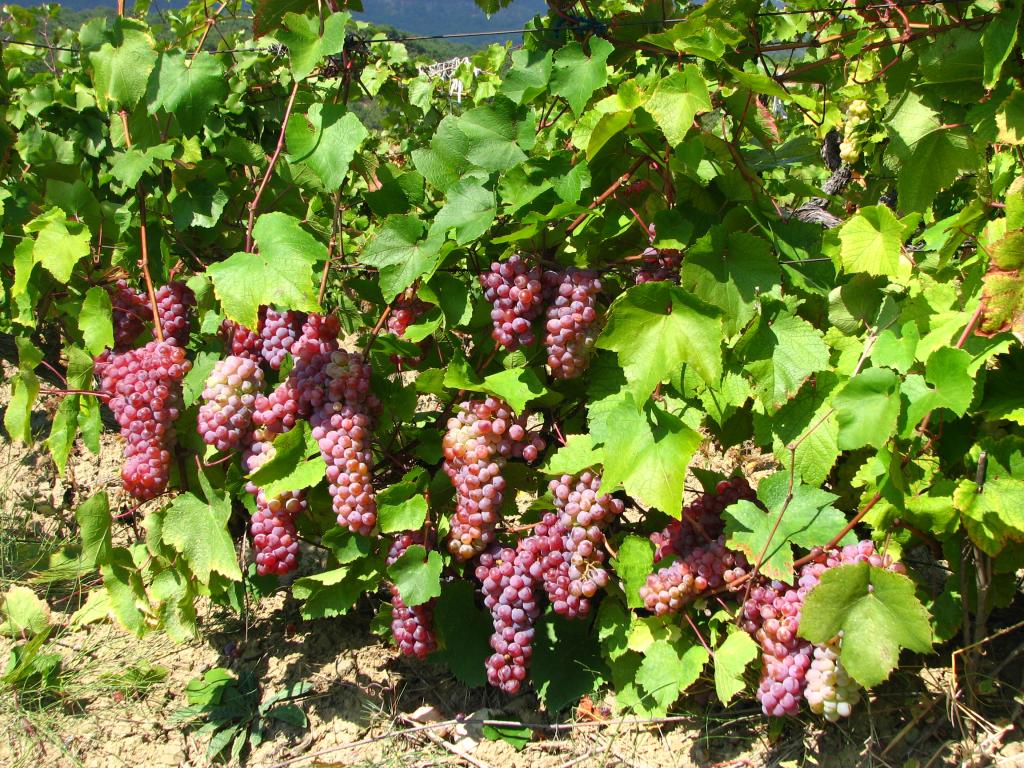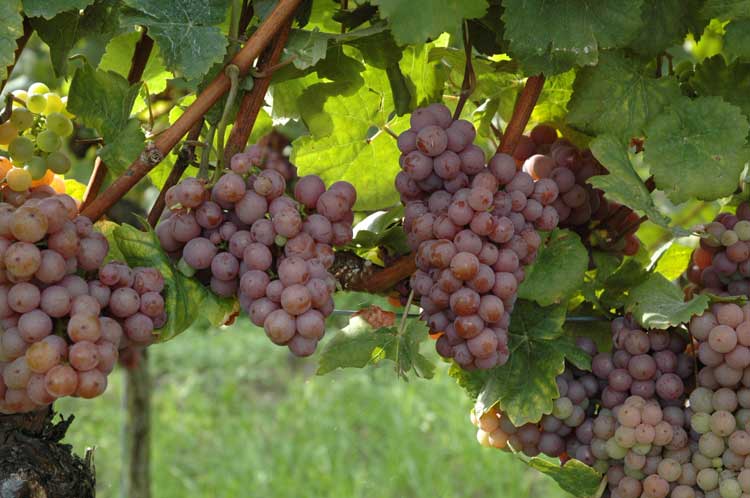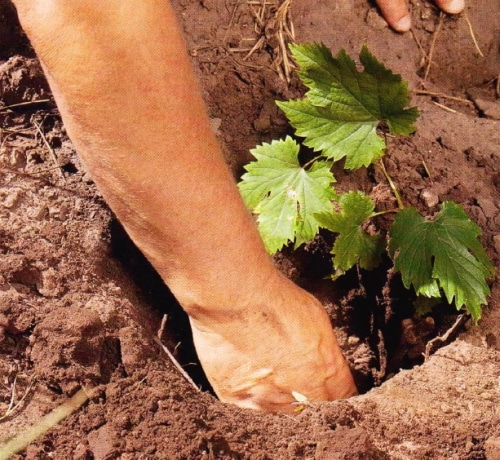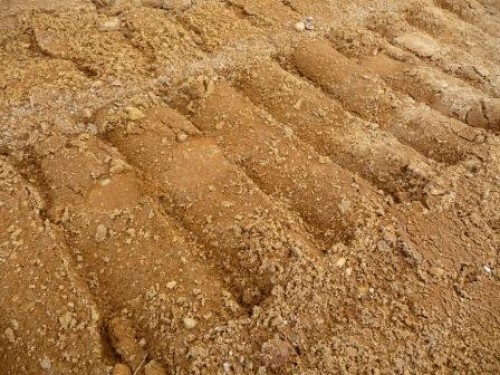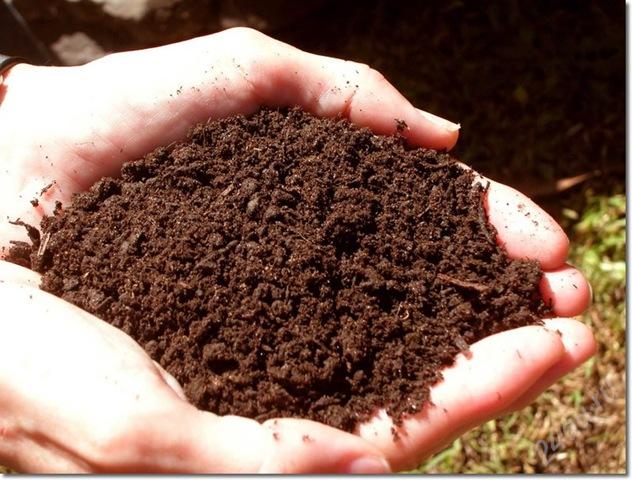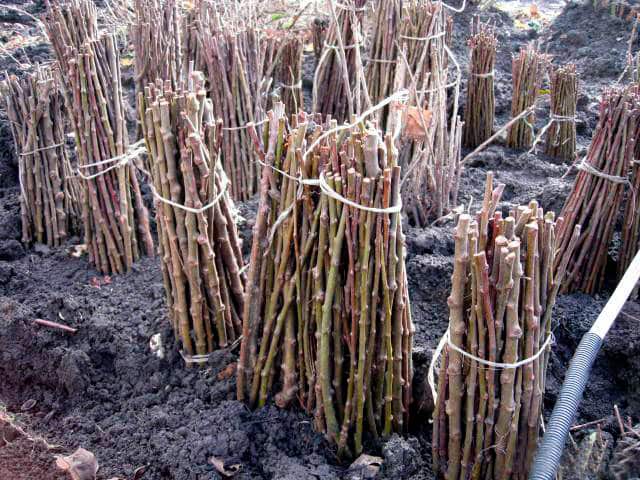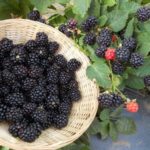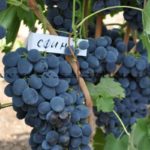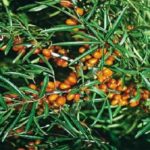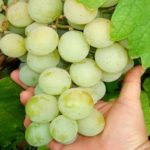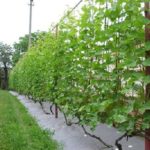The name Traminer grape variety refers to a family of several varieties of berries of Austrian origin. This variety is common in Western Europe and is widely cultivated not only in this territory, but also in Russia. The proposed material examines the varieties of grapes of this family and the features of its agricultural technology.
- Breeding history
- Variety varieties
- Pink
- Black
- White
- External data
- Bush
- Leaves and shoots
- Fruits and yield
- Region of growth
- Planting dates and technology
- Rules of agricultural technology
- Soil composition
- Irrigation
- Top dressing
- Treatment
- Formation of a fruiting vine
- Reproduction methods
- When to expect first fruiting
- Ripening and harvesting dates
- Where are grapes used?
Breeding history
This grape and its main variety, Gewürztraminer, were cultivated in the Middle Ages, in what is now Austria, on the alpine slopes. Over time, the variety became widespread in other countries. The current name Traminer was assigned relatively recently - in 1973, and is dedicated to the Italian province of the same name. It was originally cultivated by farmers from wild grapes that grew in this area.
Variety varieties
Traminer belongs to the Muscat variety of grape. The family includes several different varieties, characterized by some differences.
Pink
Resistant to pests and diseases, productive variety with round berries and pink color. The berries are medium-sized, with a high juice content. The main purpose is to make wine.
Black
This variety was bred quite recently - in 2007 in Greece. The berry has a bluish-black hue, the cluster is dense and medium in size.
White
Variation of the pink variety. Characterized by a lighter (almost white) color of the berries. It has a spicy taste and is widely used in winemaking.
External data
All of the listed varieties differ mainly only in the color and characteristics of the berries. Next - about the external data of the variety.
Bush
It does not have great growth vigor, especially when it comes to industrial cultivation. It looks classic - medium height, densely covered with leaves and strewn with grape clusters.
Leaves and shoots
The leaves are wide, leathery, with rounded teeth, and small in size. The color of young foliage is green, becoming yellowish-red as the season progresses. The shoots are spreading, the tops have a whitish tint.
Fruits and yield
The fruit size is small. The color of the berries depends on the variety. The brush is dense, cone-shaped, and after ripening weighs, on average, about ninety grams. Traminer is characterized by early ripening; the berries remain on the vine for a long time, which allows for complete harvesting of the fruit. Productivity is consistently high, with minor fluctuations from year to year.
Region of growth
Traminer prefers a warm climate and is grown in the southern part of Europe, in our country - in Kuban, Crimea and other regions with a warm climate.
Planting dates and technology
Shoots are planted on flat areas and hillsides facing south and southwest. The place is chosen with free access to sunlight and should be sufficiently humidified.
If a wintered seedling is used, planting is done in mid-April, young shoots are planted later - in early June.
A small hole is first dug, up to eighty centimeters deep and up to seventy centimeters in diameter. The roots are sprinkled with the upper, more fertile, layer of soil, and the lower one is evenly distributed over the area. If the soil is clayey, a little crushed stone with sand is poured into the hole before planting; if the soil is sandy, compost is added. The hole is filled to half with the specified composition, then fertilizers are added and the soil is backfilled.
The seedling should be placed in such a way that the upper open bud is located five to ten centimeters below the ground surface. The roots should be placed at a depth of at least forty centimeters, this will prevent them from being damaged by winter frosts.
Rules of agricultural technology
The peculiarities of grape cultivation take into account several factors that determine how intensively the bush will develop.Traminer does not tolerate severe frosts, so for the winter the vine is dug in and covered with film. At the beginning of the season, after opening, the vine is placed on a rigid trellis, made from guy wires, between two installed posts.
Soil composition
Loamy soils of high fertility are suitable for grapes. It is necessary to pre-lime the soil, especially if the soil is highly acidic.
Irrigation
Abundant irrigation should be provided at least once a week. Watering must be limited during the ripening period to eliminate excess moisture.
Top dressing
Regular feeding will ensure the supply of necessary nutrients and should be done every month, except for the specified period of ripening of the berries. Fertilizers are also placed when planting a bush, directly into the hole. Used: wood ash, potassium, nitrogen, humus, peat.
Treatment
To protect bushes from pests, fungicides are used. The grapes are regularly inspected to exclude pests. At the beginning of the season, the soil around the bush and the vine must be treated with iron sulfate. Over time, regular treatments will counteract possible pests and diseases.
Formation of a fruiting vine
To ensure stable yields, the bush must be properly formed. Initially, half of the existing buds located in the upper part of the shoot are left for fruit, the brushes are removed from the lower branches - a vine is formed for the next year's harvest. This is done every season, gradually removing the lower branches and cutting off the weak ones, leaving strong shoots.
If the bush is not pruned for several years, you should not expect high yields and large berries.Proper formation of the bush will ensure the necessary quality of berries and a stable harvest.
Note! A newly planted bush cannot be pruned; this operation is performed starting from the second season.
Reproduction methods
The main methods of propagation of Traminer are layering and cuttings. To form a cutting, the edge of the young vine is dug in in the middle of the season, for subsequent rooting and production of a separate shoot. This method allows you to get a stronger shoot that is resistant to low temperatures.
Cuttings are cut from a young vine and stored until spring in the basement, treated with wax. They are planted in the ground upon the onset of consistently warm weather in compliance with the above rules.
When to expect first fruiting
The first fruiting occurs already in the second season. But the bush will begin to produce stable yields from the fourth or fifth year of cultivation.
Ripening and harvesting dates
The berries ripen towards the end of summer and beginning of autumn. You should not remove the brushes prematurely, since older berries have time to gain aroma and sweetness.
Where are grapes used?
Traminer grapes are widely used in winemaking. It serves as a raw material for the preparation of exquisite elite white wines.
By growing Traminer in a personal plot, the gardener will receive delicious, juicy berries and will be able to independently prepare aromatic wine that is in no way inferior to that purchased in a store. This variety is stable enough for cultivation in Russian conditions in the southern regions and is characterized by stable yields.


